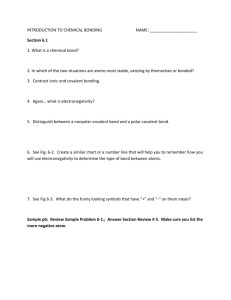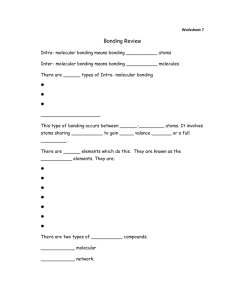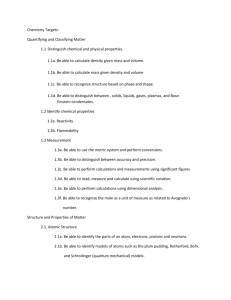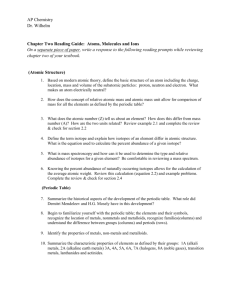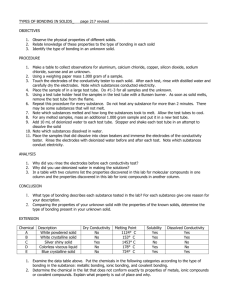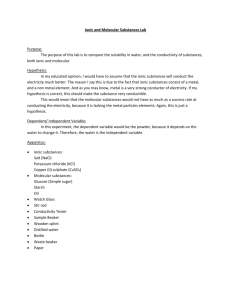L16 - Handout (Unit Review)
advertisement
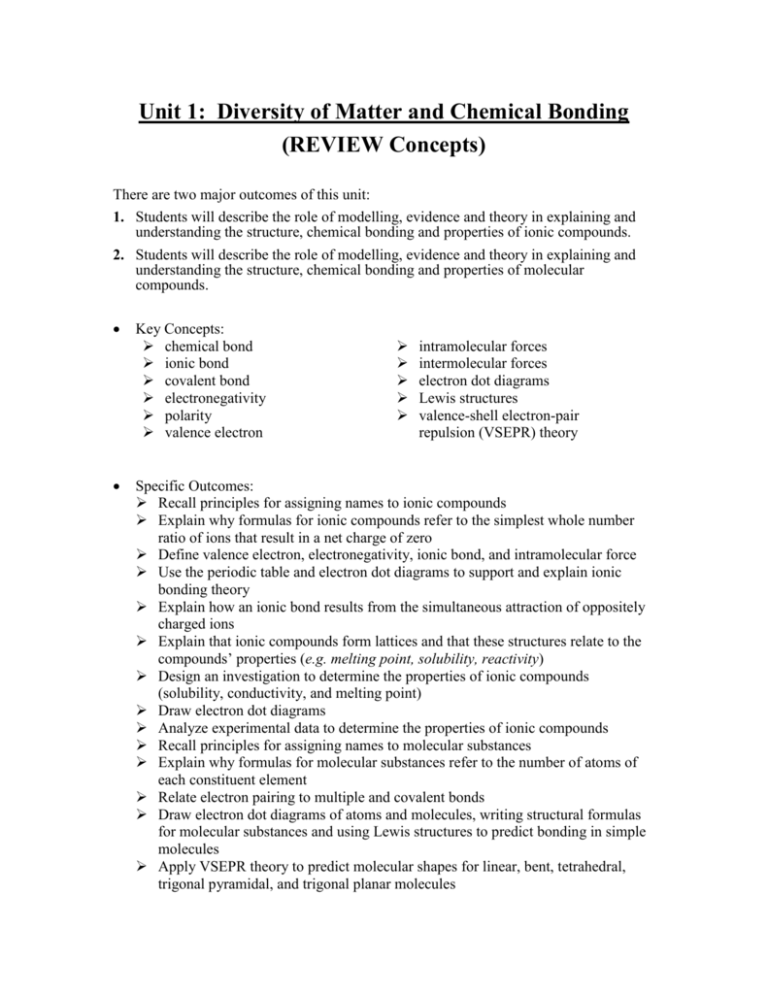
Unit 1: Diversity of Matter and Chemical Bonding (REVIEW Concepts) There are two major outcomes of this unit: 1. Students will describe the role of modelling, evidence and theory in explaining and understanding the structure, chemical bonding and properties of ionic compounds. 2. Students will describe the role of modelling, evidence and theory in explaining and understanding the structure, chemical bonding and properties of molecular compounds. Key Concepts: chemical bond ionic bond covalent bond electronegativity polarity valence electron intramolecular forces intermolecular forces electron dot diagrams Lewis structures valence-shell electron-pair repulsion (VSEPR) theory Specific Outcomes: Recall principles for assigning names to ionic compounds Explain why formulas for ionic compounds refer to the simplest whole number ratio of ions that result in a net charge of zero Define valence electron, electronegativity, ionic bond, and intramolecular force Use the periodic table and electron dot diagrams to support and explain ionic bonding theory Explain how an ionic bond results from the simultaneous attraction of oppositely charged ions Explain that ionic compounds form lattices and that these structures relate to the compounds’ properties (e.g. melting point, solubility, reactivity) Design an investigation to determine the properties of ionic compounds (solubility, conductivity, and melting point) Draw electron dot diagrams Analyze experimental data to determine the properties of ionic compounds Recall principles for assigning names to molecular substances Explain why formulas for molecular substances refer to the number of atoms of each constituent element Relate electron pairing to multiple and covalent bonds Draw electron dot diagrams of atoms and molecules, writing structural formulas for molecular substances and using Lewis structures to predict bonding in simple molecules Apply VSEPR theory to predict molecular shapes for linear, bent, tetrahedral, trigonal pyramidal, and trigonal planar molecules Illustrate, by drawing or building models, the structure of simple molecular substances Explain intermolecular forces, London (dispersion) forces, dipole-dipole forces and hydrogen bonding Relate properties of substances (e.g. melting and boiling points, enthalpies of fusion and vaporization) to the predicted intermolecular bonding in the substances Determine the polarity of a molecule based on simple structural shapes and unequal charge distribution Describe bonding as a continuum ranging from complete electron transfer to equal sharing of electrons State a hypothesis and make a prediction about the properties of molecular substances based on attractive forces (e.g. melting and boiling points, enthalpies of fusion and vaporization) Build models depicting the structure of simple covalent molecules, including selected organic compounds Carry out an investigation to determine the melting or boiling point of a molecular substance Graph and analyze data, for trends and patterns, on the melting and boiling points of a related series of molecular substances Textbook Review Questions: p. 86 # 6-10, 18, 28, 31-37, 40, 42, 44, 50, 53, 58, 63




